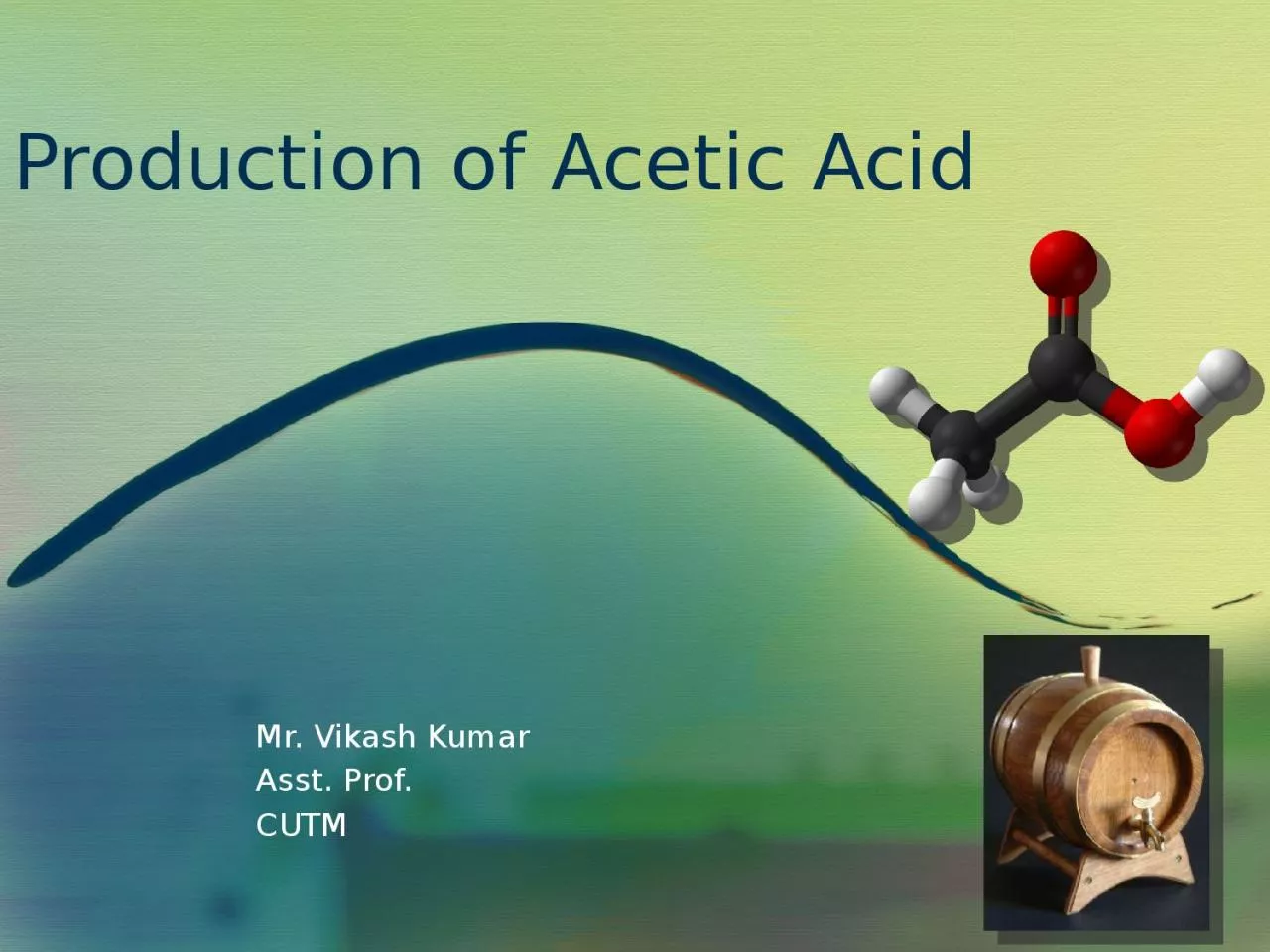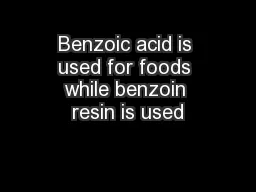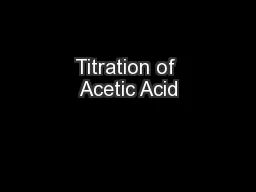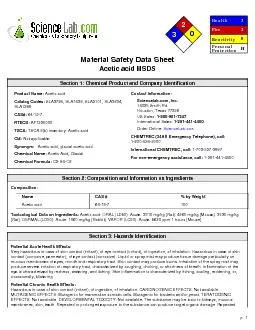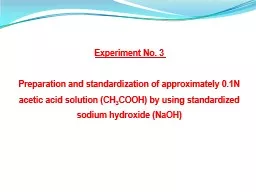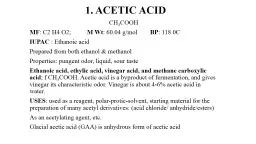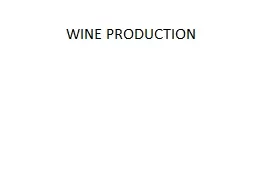PPT-Production of Acetic Acid
Author : molly | Published Date : 2022-06-15
Mr Vikash Kumar Asst Prof CUTM Acetic acid was used as a medicinal agent and was probably the first known antibiotic Acetic acid CH3COOH is the principal constituent
Presentation Embed Code
Download Presentation
Download Presentation The PPT/PDF document "Production of Acetic Acid" is the property of its rightful owner. Permission is granted to download and print the materials on this website for personal, non-commercial use only, and to display it on your personal computer provided you do not modify the materials and that you retain all copyright notices contained in the materials. By downloading content from our website, you accept the terms of this agreement.
Production of Acetic Acid: Transcript
Download Rules Of Document
"Production of Acetic Acid"The content belongs to its owner. You may download and print it for personal use, without modification, and keep all copyright notices. By downloading, you agree to these terms.
Related Documents

